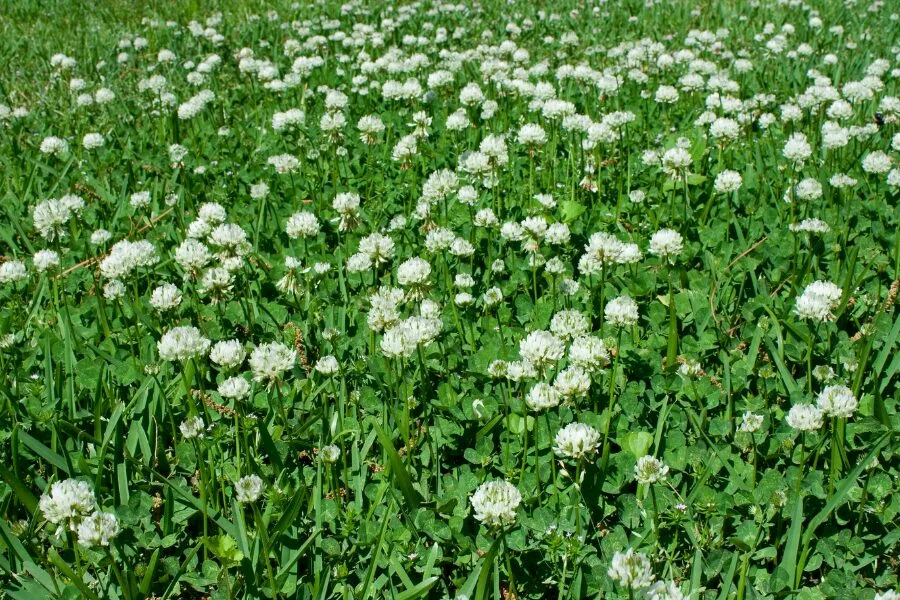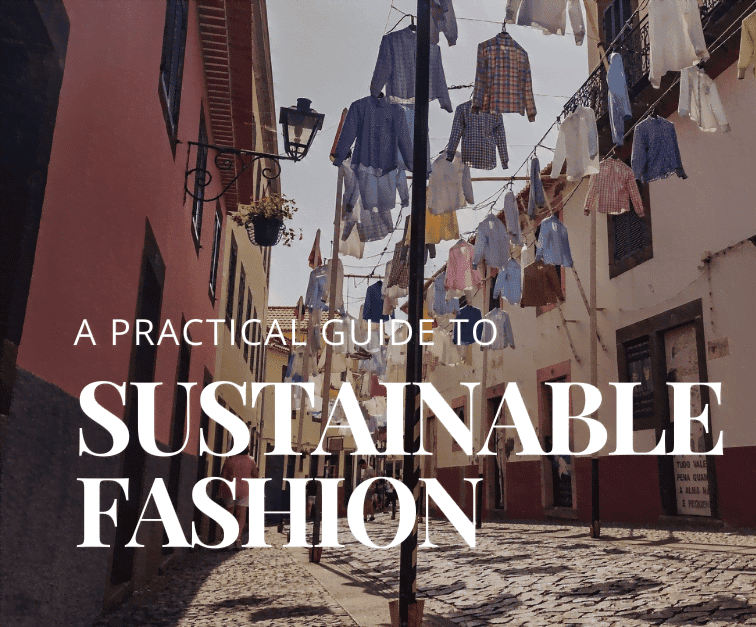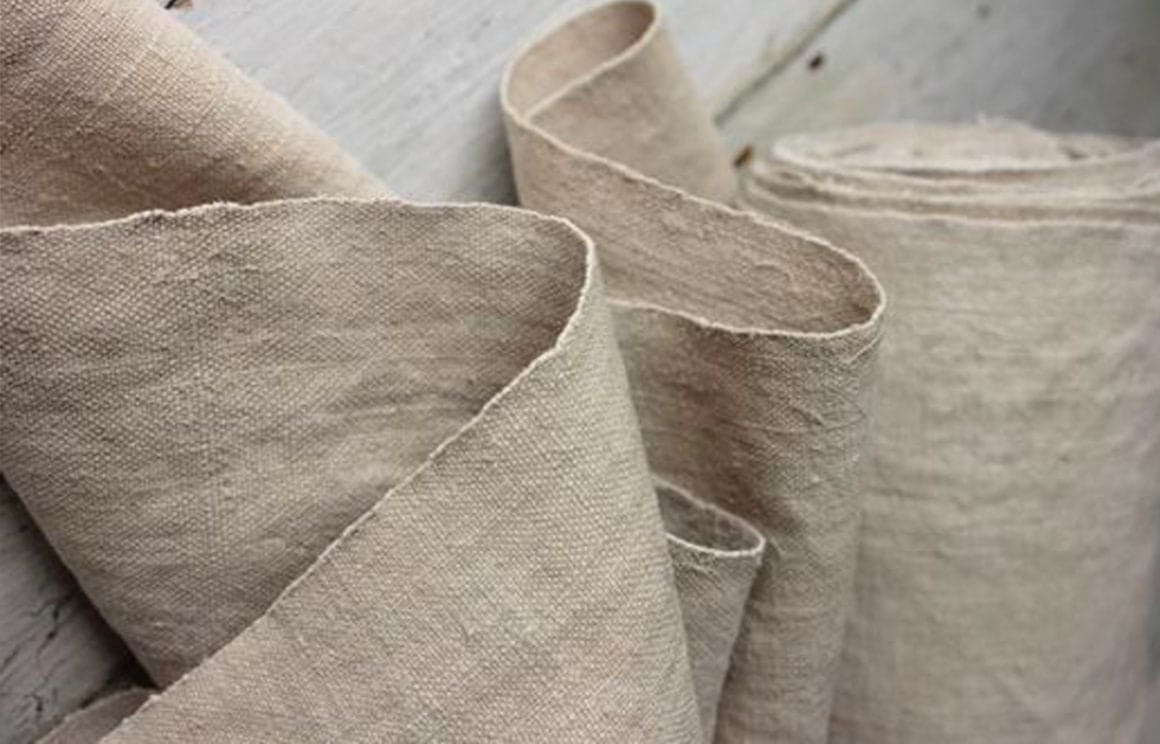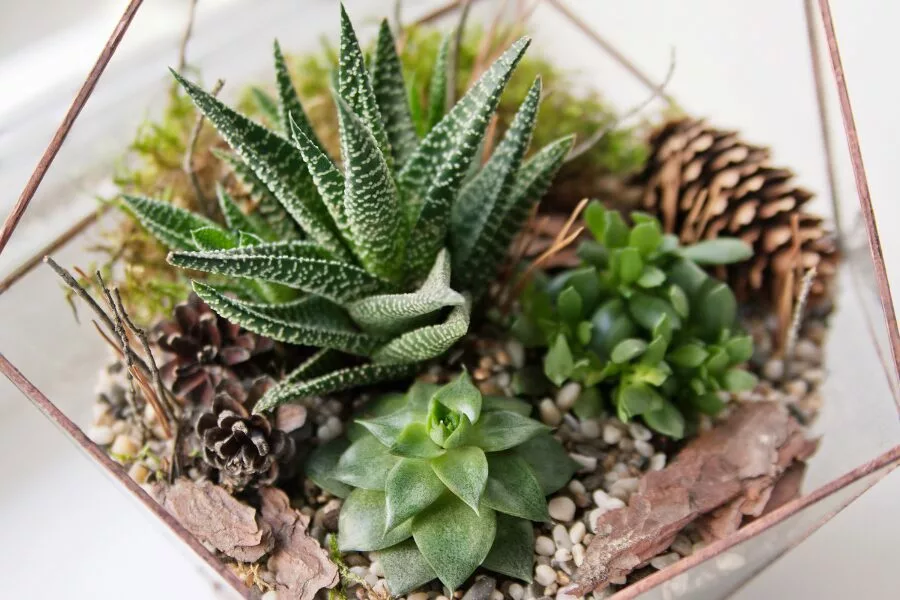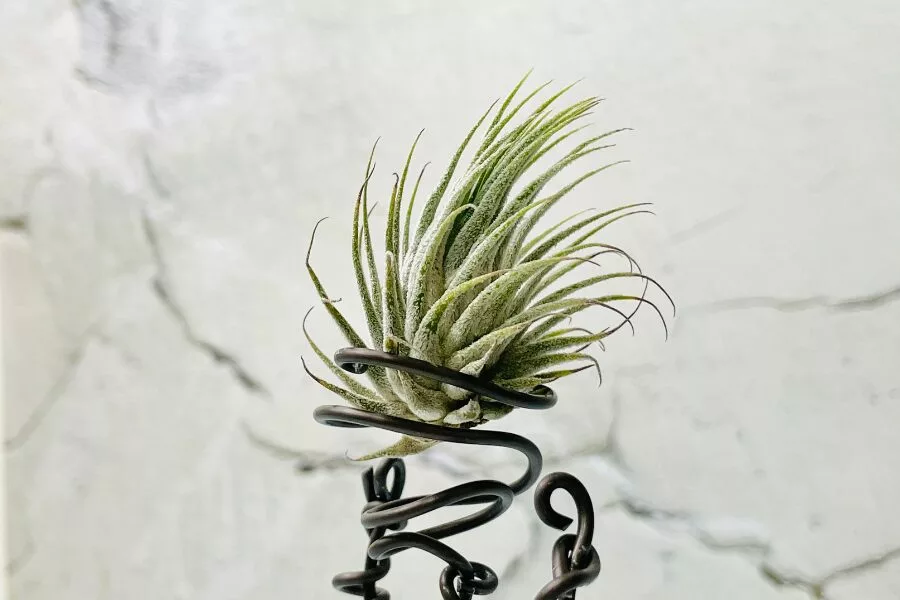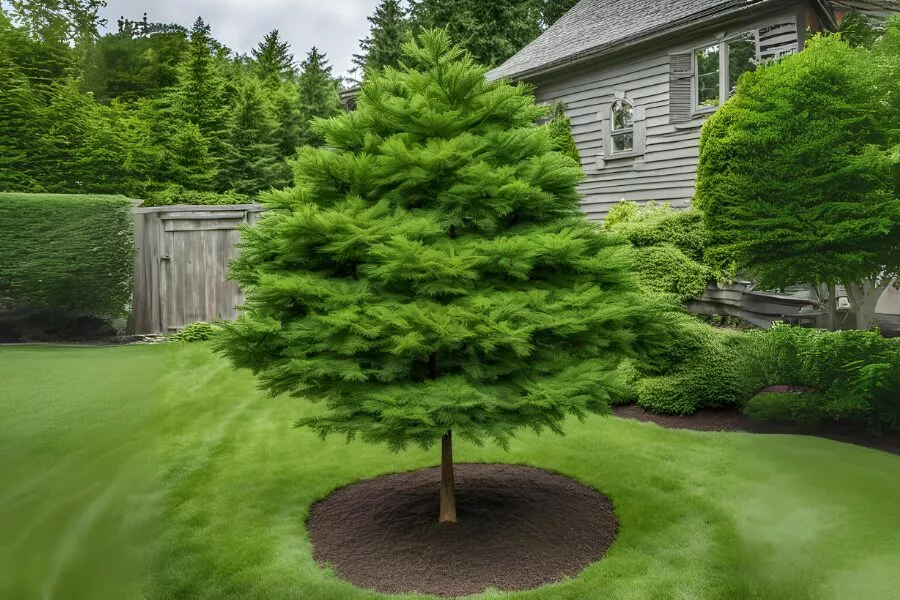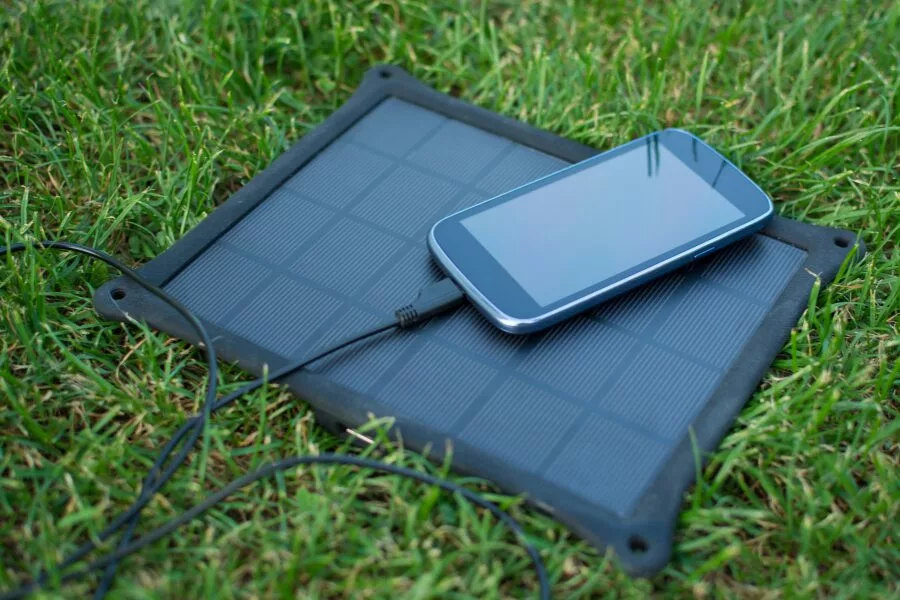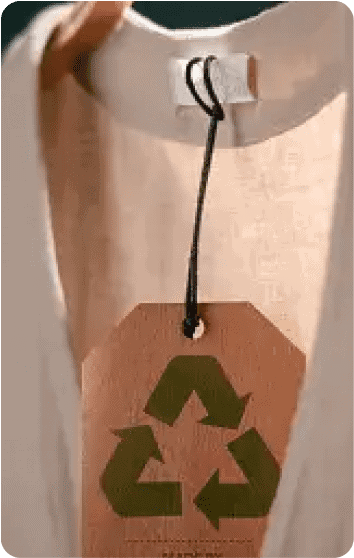Have you been looking for greener, easier lawn options lately? You’ve come to the right place. Introducing clover lawns! Clovers are currently revolutionizing garden care with their eco-friendly appeal, being a fresh alternative to traditional grass lawns.
Unlike conventional grass lawns, which often require a lot of water, fertilizer, and maintenance, clover lawns are a naturally resilient and adaptable ground cover that thrives in a variety of conditions. Now, that’s what we like! Their ability to improve soil health, reduce water usage, and decrease the need for chemical inputs makes them particularly attractive to eco-conscious gardeners, like us. Moreover, the lush, green appearance of clover lawns, coupled with its soft texture and delicate flowers, adds both beauty and biodiversity to outdoor spaces.
As more people become aware of the environmental impact of their gardening choices, clover lawns have quickly risen to prominence as a top choice for everyone who’s looking to create a sustainable and low-maintenance landscape! Here’s everything that you need to grow and maintain your clover lawn.
Unlock Your Savings with Exclusive Offer Coupons
Save big while shopping for sustainable products! Grab your exclusive coupons today!

The Many Perks of Clover Lawns
Clover is an increasingly popular choice for lawns thanks to its remarkable resilience and environmental benefits, giving homeowners plenty of reasons to plant a clover lawn. Here’s why it’s becoming a go-to option for gardeners:
Drought-Friendly and Heat-Tolerant
As climate change leads to more frequent and intense droughts, the ability of clover to withstand these conditions positions it as a future-proof option for sustainable clover lawn care.
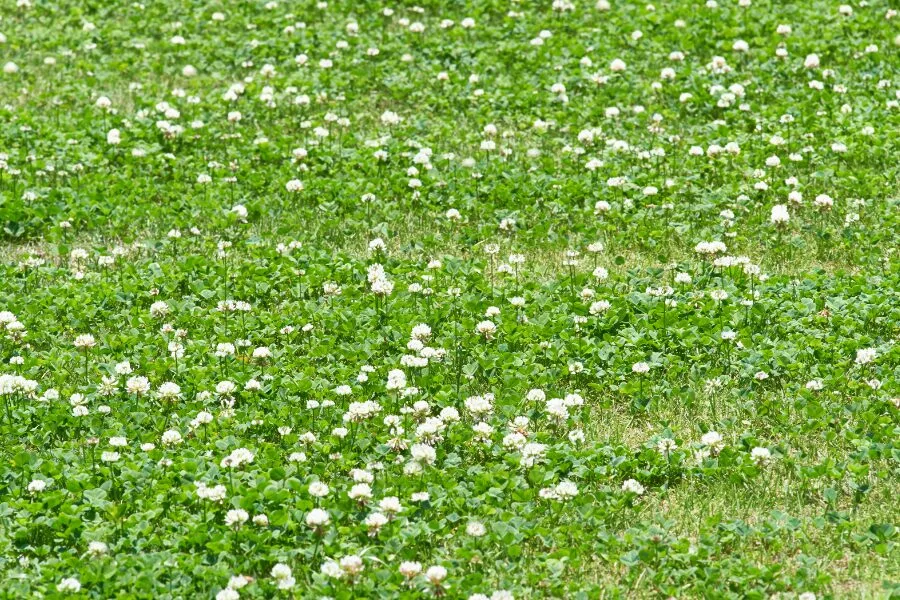
One of the standout features of clover is its ability to thrive in conditions where traditional grass often falters. Clover is naturally drought-tolerant and can endure periods of heat and dryness without losing its vibrant green color. Unlike many grass species that require frequent watering to stay healthy, clover has deep roots that allow it to access moisture from below the soil surface, even during dry spells. This makes it an excellent choice for regions that experience water restrictions or where maintaining a green lawn during the summer months can be challenging!
Low Maintenance
For those tired of the constant upkeep that traditional grass lawns demand, trust us when we say clover is a great alternative. Clover grows more slowly than grass, meaning it requires far less mowing. In fact, some varieties of clover can stay low to the ground, reducing the need for mowing to just a few times a year! That’s one of the best reasons to plant a clover lawn.
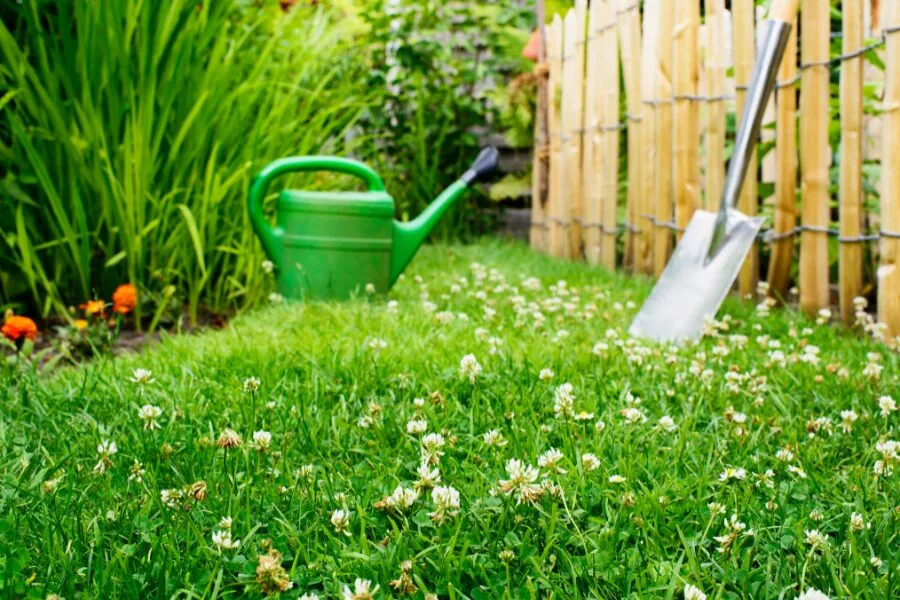
Curb Greenhouse Gasses
Here’s something you probably don’t know: clover has the unique ability to fix nitrogen from the air into the soil, acting as a natural fertilizer. This reduces or even eliminates the need for additional fertilizers, saving both time and money! Clover’s robust growth pattern also naturally suppresses weeds, further minimizing the need for maintenance and chemical interventions. With clover, you can enjoy a lush, green lawn without the endless cycle of mowing, watering, and fertilizing that grass lawns typically demand.
Eco-Friendly
Clover is a powerhouse when it comes to environmental benefits. By fixing nitrogen in the soil, clover reduces the need for synthetic fertilizers, which are often derived from fossil fuels and can contribute to pollution. This natural fertilization process not only improves the health of the soil but also promotes a healthier ecosystem, supporting a wide range of beneficial insects, including pollinators like bees.
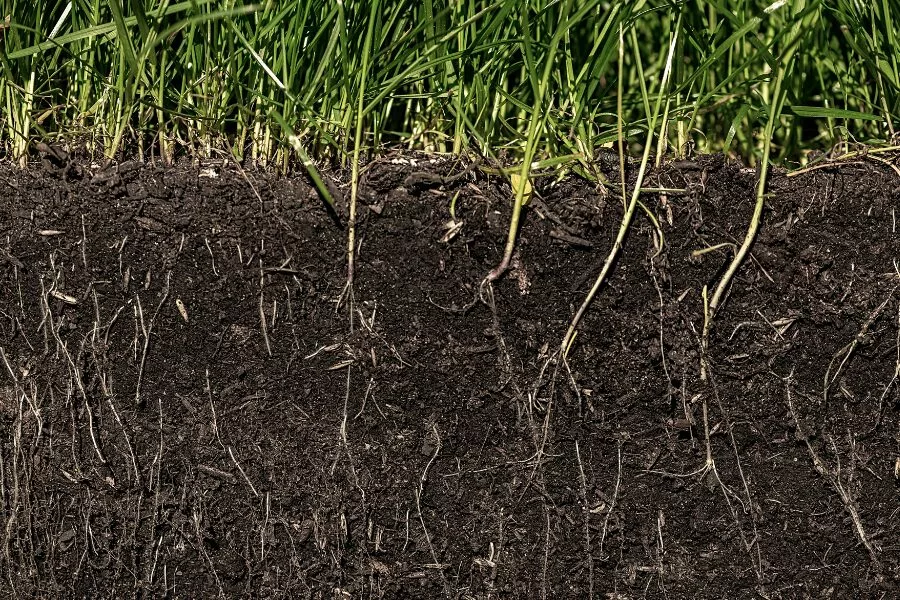
Prevents Soil Erosion
Clover’s deep root system helps prevent soil erosion, improve soil structure, and increase the soil’s ability to retain water. Now, this is another one of the many great reasons to plant a clover lawn, it’s absolutely great for eco-conscious gardeners who are looking to reduce their carbon footprint and create a more sustainable outdoor space. You can make a positive impact on your own garden and contribute to broader environmental goals, like reducing water consumption and supporting biodiversity!
Getting Started with Clover Lawn Seed
Ready to begin growing clover lawns? It’s an exciting journey, and the first step is picking the right seeds for your garden. Let’s break it down so you can make the best choice and set yourself up for success when growing a clover lawn.
Choosing the Right Clover Lawn Seed
First things first, let’s talk about the different types of clover seeds out there. You’ve got a few options, and the one you choose depends on what you’re looking to achieve.
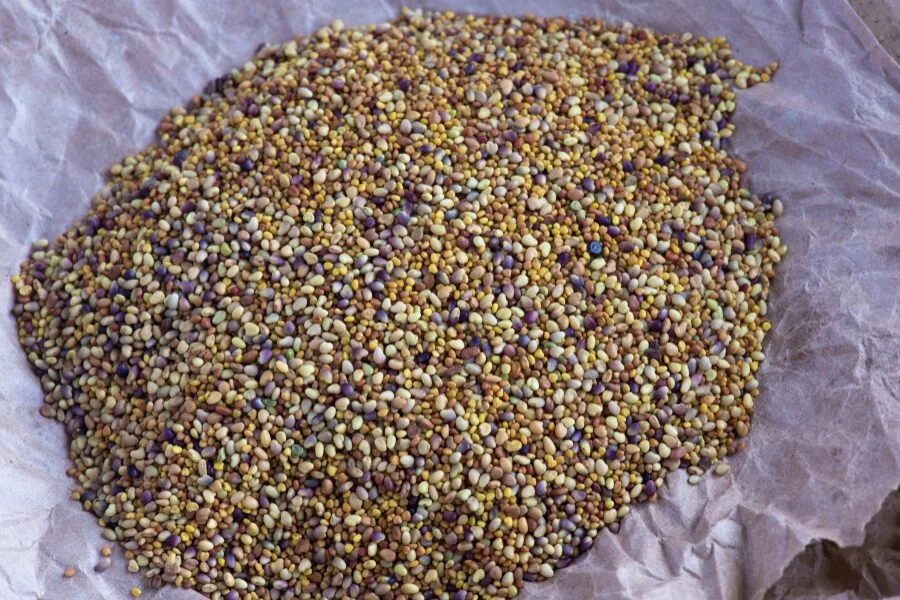
- White Clover: This is the classic choice, known for its hardiness and versatility. It grows well in most conditions and can cover large areas with ease. Plus, it produces those lovely little white flowers that can add a charming touch to your lawn.
- Micro Clover: If you’re looking for something a bit more refined, micro clover lawns might be the way to go. It has smaller leaves and stays lower to the ground, which means even less mowing for you! Micro clover lawns also blends beautifully with traditional grasses if you want a mixed lawn that’s both lush and low-maintenance.
Before growing a clover lawn, take a moment to think about what you want from your lawn—do you prefer a wildflower meadow vibe, or are you aiming for a manicured, golf course look? Your answer will help you pick the right clover seed.
Preparation is Key
Now that you’ve got your seeds, let’s get the soil ready before growing a clover lawn. This step is super important because good preparation makes all the difference in how well your clover lawn will grow.
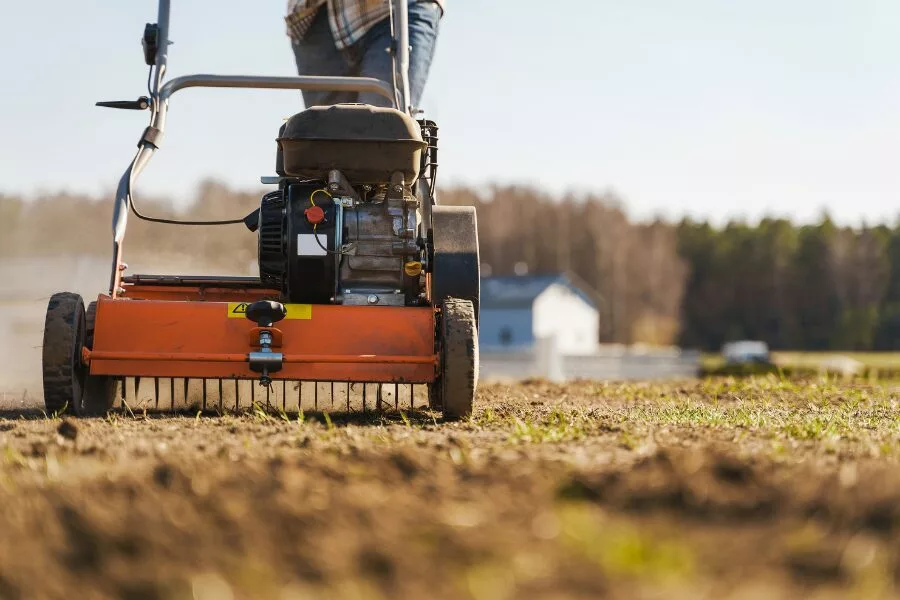
Start by clearing the area of any existing grass, weeds, or debris. You want a clean slate so your clover seeds don’t have to compete for nutrients. If you’re dealing with stubborn weeds, consider giving the area a good rake or even using a tiller to break up the soil a bit.
Next, check the soil’s pH level. Clover does best in slightly acidic to neutral soil (somewhere between 6.0 and 7.0). If your soil is too acidic or alkaline, you might need to add some lime or sulfur to balance things out. This sounds complicated, but don’t worry—it’s easier than it sounds, and a quick soil test kit from your local garden center will give you all the info you need.
Once the soil is prepped, give it a good watering a day or two before you plant. You want the soil to be moist but not soggy when you sow your seeds.
How to Plant Clover Fields
Okay, you’ve got your seeds and your soil is prepped—now it’s time to plant! The best times to sow clover seeds are early spring or late summer when the weather is mild and there’s enough moisture in the air.
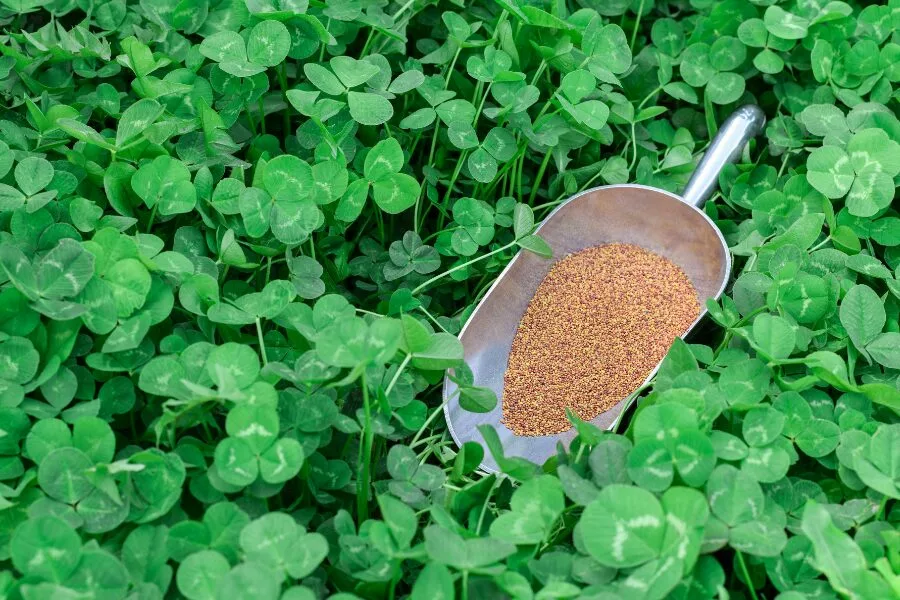
To plant, simply scatter the seeds evenly over the soil. You can do this by hand or use a seed spreader if you’re working with a larger area. After sowing, lightly rake the soil to cover the seeds. You don’t need to bury them too deep—just a thin layer of soil on top will do.
Give the area a gentle watering to help the seeds settle in. Keep the soil consistently moist over the next few weeks as the seeds germinate and start to grow. You’ll start seeing little green sprouts in no time!
You’ve Planted Your Seeds—What’s Next?
Now that your seeds are in the ground, it’s all about nurturing that new growth. Growing a clover lawn is pretty low-maintenance, but there are a few tips to keep your lawn looking its best:
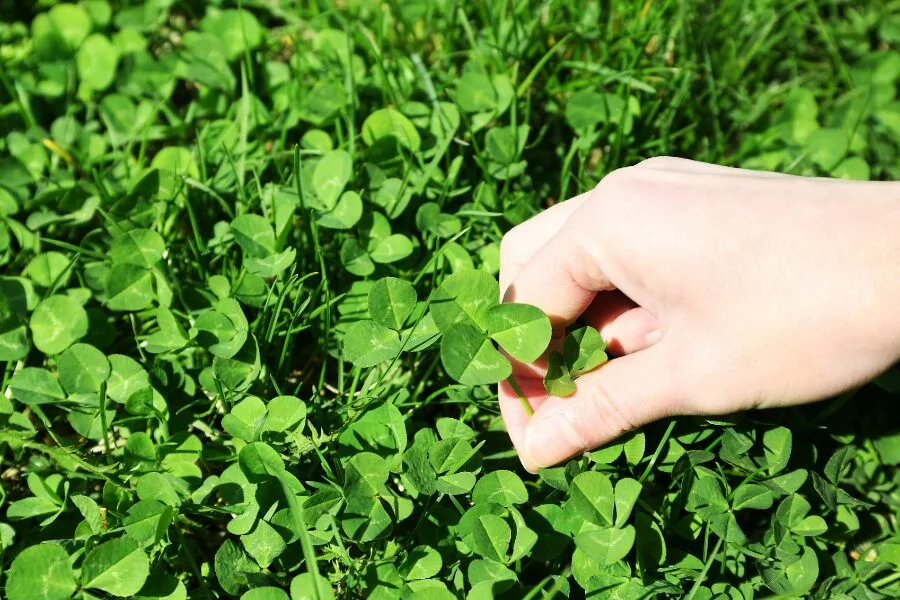
- Watering: Keep an eye on the weather and water your lawn as needed, especially during dry spells. Clover is drought-tolerant, but young plants need consistent moisture to get established.
- Fertilizing: The great thing about clover is that it usually doesn’t need extra fertilizer. But if you want to give your lawn a little boost, a light application of compost or an organic fertilizer can help.
- Weeding: Clover naturally crowds out most weeds, but if you see any popping up, just pull them out by hand.
- Mowing: You’ll probably notice that your clover lawn doesn’t grow as tall as grass, so you won’t need to mow as often. When you mow, set your mower blade high to avoid cutting too low.
And there you have it! With a bit of clover lawn care, your clover lawns will soon be lush, green, and ready for all the outdoor enjoyment you’ve been dreaming of. Enjoy the process, and don’t hesitate to experiment and learn as you go. Happy planting!
How to Care for Your Clover Lawns
You’ve planted your clover lawn, and it’s starting to take root—exciting times! Now, let’s talk about how to keep it looking lush, green, and healthy with some simple care tips.
Watering
First up, let’s chat about watering. One of the reasons clover is such a superstar in the garden is that it doesn’t need as much water as traditional grass. That said, during those early days when your clover is just getting established, you’ll want to keep the soil consistently moist. Think of it like this: you’re setting the foundation for a strong, resilient lawn, so a little extra TLC goes a long way.
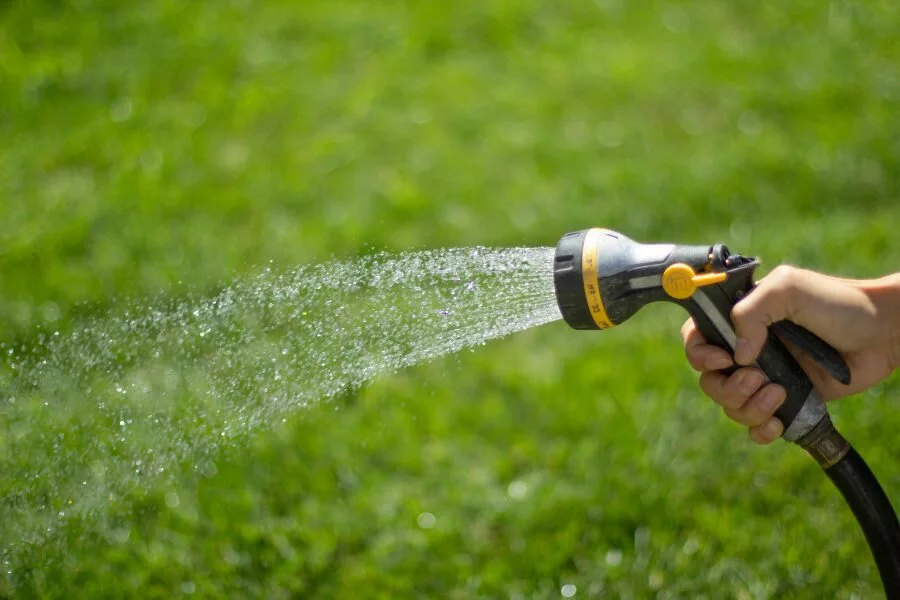
Once your clover is up and growing, you can ease off on the watering. Clover is pretty drought-tolerant, but it will still appreciate a good drink during hot, dry spells. Aim for a deep watering once a week rather than frequent light sprinkles—this encourages deeper root growth, which helps the clover stay strong and vibrant.
Fertilizing
Here’s some good news: clover is a natural self-feeder! Thanks to its ability to fix nitrogen from the air into the soil, your clover lawn often won’t need much in the way of additional fertilizer. This is one of the reasons clover is such a low-maintenance option—it takes care of itself, requires little clover lawn care, and even helps improve the soil for any nearby plants.
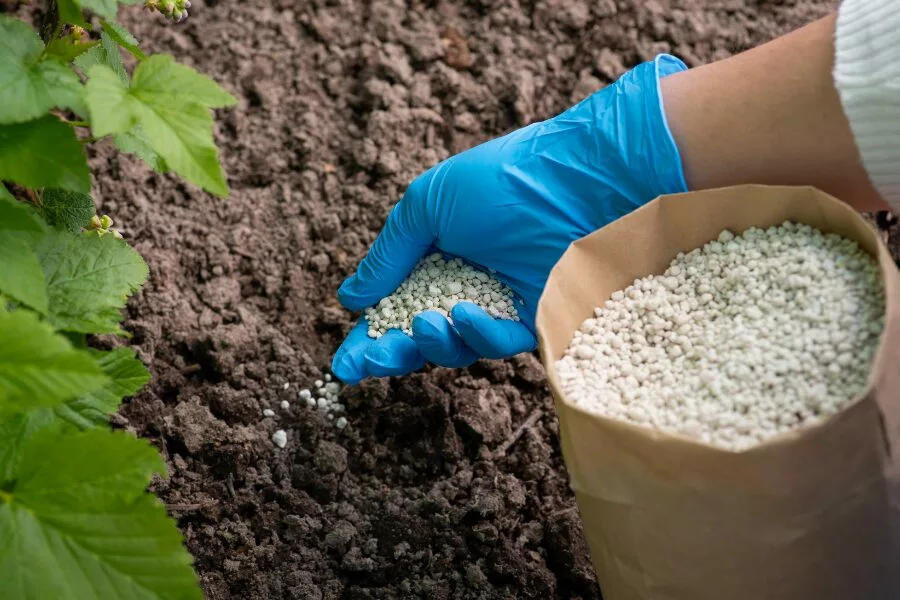
However, if you feel your lawn could use a little boost, especially in its first year, a light application of compost or an organic fertilizer in the spring can give it an extra kick. Just be careful not to overdo it; too much fertilizer can actually encourage grass and weeds to take over, and we want the clover to stay in the spotlight!
Weeding and Maintenance
One of the great things about clover is its ability to naturally suppress weeds. Its dense growth pattern crowds out most unwelcome plants, making your job so much easier. But, let’s be honest, a few stubborn weeds might still pop up here and there. When they do, just pull them out by hand—no need for harsh chemicals. The goal is to keep your lawn as eco-friendly as possible, right?
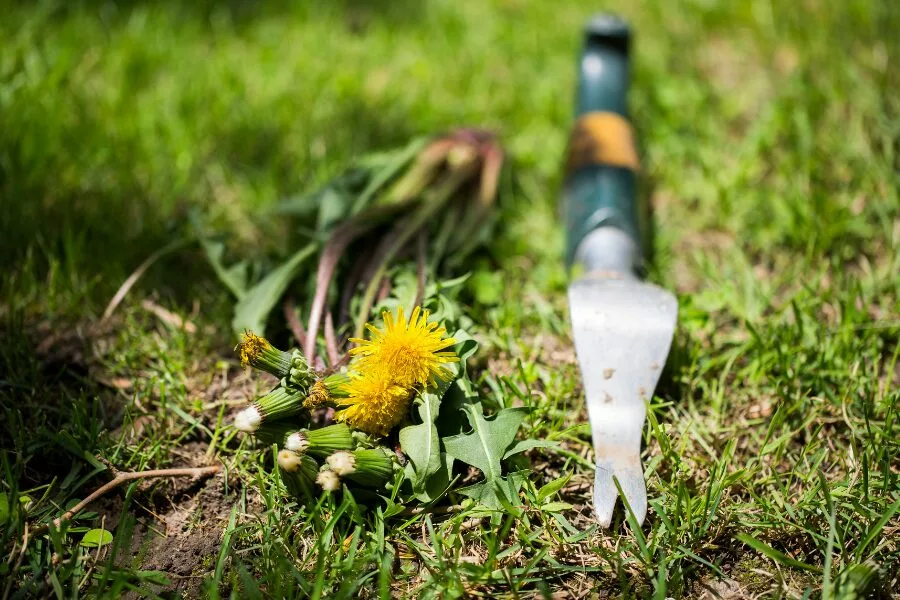
As for mowing, you’ll find yourself spending a lot less time behind the mower. Clover grows lower and more slowly than grass, so you can get away with mowing just a few times a season. When you mow, keep the blade set high. This not only protects the clover but also encourages it to spread out and fill in any gaps.
Clover Lawn vs. Grass Lawn: A Comparative Look
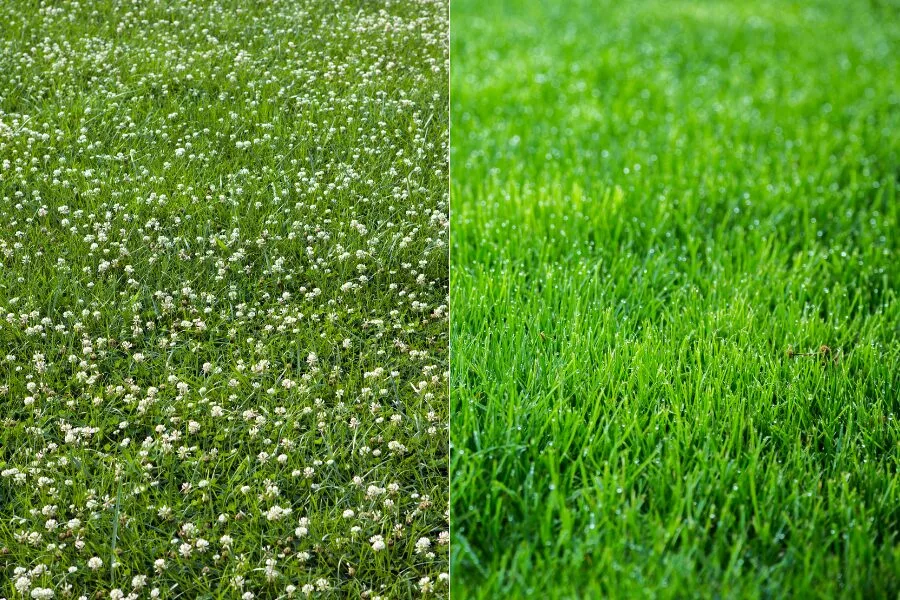
When deciding between a clover lawn vs. grass lawn, there are several factors to consider, especially if sustainability is a priority for you. Let’s break it down with a side-by-side comparison that highlights cost-effectiveness, environmental impact, and aesthetic appeal.
| Category | Clover Lawn | Grass Lawn | Why It Matters |
| Cost-Effectiveness | Lower overall costs. Clover requires less water, fewer fertilizers, and less mowing, which translates to reduced long-term expenses. Also, clover seeds are generally inexpensive, and because clover can self-seed, it naturally fills in bare spots, saving you money on reseeding. | Higher overall costs. Grass lawns often require significant investment in water, fertilizers, weed control, and regular mowing. Grass seeds or sod can also be costly, especially for large areas. Additionally, the maintenance costs, including fuel for mowing and potentially professional lawn care services, add up over time. | Clover’s lower water and fertilizer needs reduce resource use and associated costs, making it a more sustainable and budget-friendly choice. |
| Environmental Impact | Highly sustainable. Clover is a natural nitrogen fixer, meaning it enriches the soil by converting atmospheric nitrogen into a form plants can use. This reduces or eliminates the need for synthetic fertilizers, which are often derived from fossil fuels and can contribute to water pollution. Clover’s deep roots help prevent soil erosion and improve soil structure, enhancing the overall health of your garden ecosystem. Additionally, clover attracts beneficial insects, including pollinators like bees, which are crucial for biodiversity. | Less sustainable. Grass lawns often require synthetic fertilizers, herbicides, and pesticides, which can have negative environmental impacts. These chemicals can leach into waterways, contributing to pollution and harming aquatic life. Grass lawns also typically demand more water, contributing to higher water use, especially in drought-prone areas. Frequent mowing with gas-powered mowers emits carbon dioxide and other pollutants, further increasing the environmental footprint of a grass lawn. | Clover lawns have a significantly lower environmental impact, enhancing soil health, supporting biodiversity, and reducing the need for harmful chemicals. |
| Aesthetic Appeal | Natural and charming. Clover lawns offer a lush, green appearance with soft, low-growing leaves. They produce small, delicate flowers that add a pop of color and attract pollinators. Clover’s texture is soft underfoot, making it pleasant to walk on. It’s ideal for those who appreciate a more natural, slightly wilder look to their outdoor spaces. Micro clover, in particular, provides a more uniform appearance similar to grass but with the added benefits of clover. | Traditional and manicured. Grass lawns offer a classic, uniform green appearance that many people find appealing. They provide a smooth, even surface that is ideal for activities like sports and play. However, achieving and maintaining this aesthetic often requires considerable effort and resources, including regular mowing, watering, and the use of chemicals to maintain a weed-free, lush look. | While both can be beautiful, clover’s natural resilience and lower maintenance needs make it a more sustainable option for those who want an attractive lawn without the high environmental cost. |
Clover Lawn Pros and Cons
If you’re considering clover lawns, it’s essential to weigh the clover lawn pros and cons to see if it aligns with your gardening goals and lifestyle. Here’s a quick rundown:
Pros of Clover Lawns
- Low Maintenance: Less mowing, watering, and fertilizing means more free time and fewer expenses.
- Eco-Friendly: Reduces the need for chemical fertilizers and supports pollinators and beneficial insects.
- Resilient: Thrives in poor soil conditions, is drought-tolerant, and can outcompete many weeds.
- Cost-Effective: Lower long-term costs due to reduced maintenance needs.
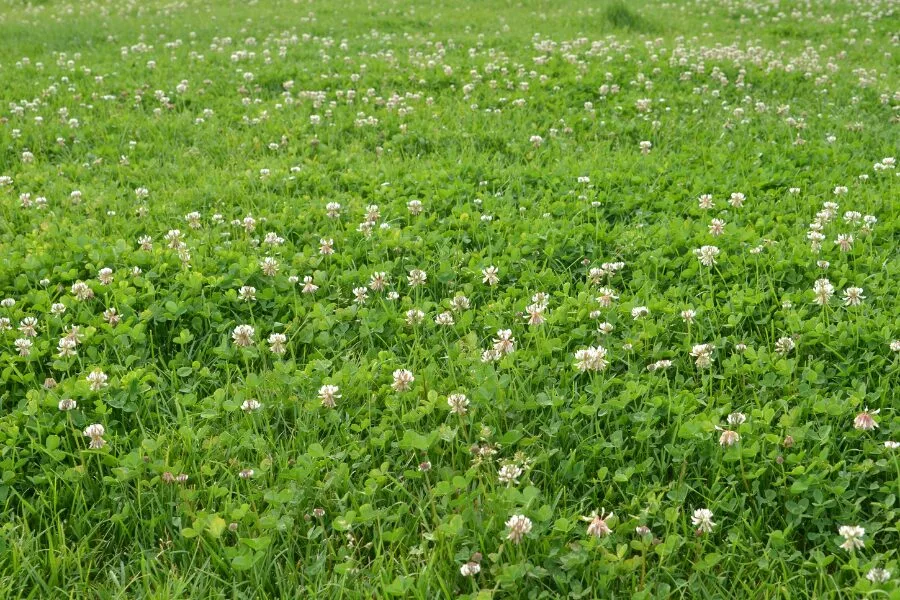
Cons of Clover Lawns
- Appearance: Clover’s natural, slightly uneven growth pattern may not appeal to those who prefer the uniform look of a traditional grass lawn.
- Durability: While clover is resilient, it can be more prone to wear and tear in high-traffic areas compared to some grass types, especially when growing a clover lawn for dogs.
- Seasonality: Clover may go dormant in extreme cold or heat, leading to seasonal changes in appearance.
Choosing between a clover lawn and a traditional grass lawn comes down to your priorities. If sustainability, low maintenance, and supporting the environment are high on your list, a clover lawn is an excellent choice! It’s beautiful, resilient, and eco-friendly. But, if you prefer the look of a traditional lawn and are willing to invest the time and resources into maintaining it, grass might be the way to go. Ultimately, the best lawn is one that fits your lifestyle and contributes positively to the environment.
Final Thoughts
As we become more aware of our environmental impact, our gardening choices play a significant role in shaping a more sustainable future. Growing clover lawns is a simple yet powerful way to contribute to this green movement. You get both personal and ecological benefits that extend far beyond your backyard!
Traditional grass lawns will require frequent watering, putting a strain on local water supplies, especially in regions prone to drought. In contrast, clover’s deep root system allows it to thrive with minimal watering, making it a more sustainable choice in the face of climate change.
If you choose clover lawns, you get a beautiful, low-maintenance landscape, and you actively participate in the effort to create a more sustainable world! Clover lawns significantly reduce the need for water, fertilizers, and pesticides, all of which are major contributors to environmental degradation.
So why not take the plunge? Embrace the change, reduce your environmental impact, and enjoy the benefits of a low-maintenance, eco-friendly lawn. Choosing clover lawns is a step in the right direction—you ultimately save time, conserve water, support local wildlife, and make a positive difference!
Want to read more like this?
Get similar stories and a free sustainability checklist delivered to your inbox.

Like our content?
Get similar stories and a free sustainability checklist delivered to your inbox.

Frequently Asked Questions
How long does clover take to grow?
Clover typically takes about 2 to 3 weeks to germinate and start growing. Full establishment can take a few months, depending on the conditions.
Where do clover lawns grow best?
Clover lawns thrive in well-drained soils with plenty of sunlight. They’re ideal for areas that experience drought and heat, where traditional grass might struggle, giving people plenty of great reasons to plant a clover lawn.
How do you make clover grass?
To create a clover lawn for dogs, start by selecting the right clover seeds, preparing your soil, and sowing the seeds evenly. Keep the soil moist until the seeds germinate, and then follow proper clover lawn care practices.
How to collect clover seeds?
To collect clover seeds, allow the clover plants to flower and produce seed pods. Once the pods turn brown and dry, harvest them and store the seeds in a cool, dry place until ready for planting.

